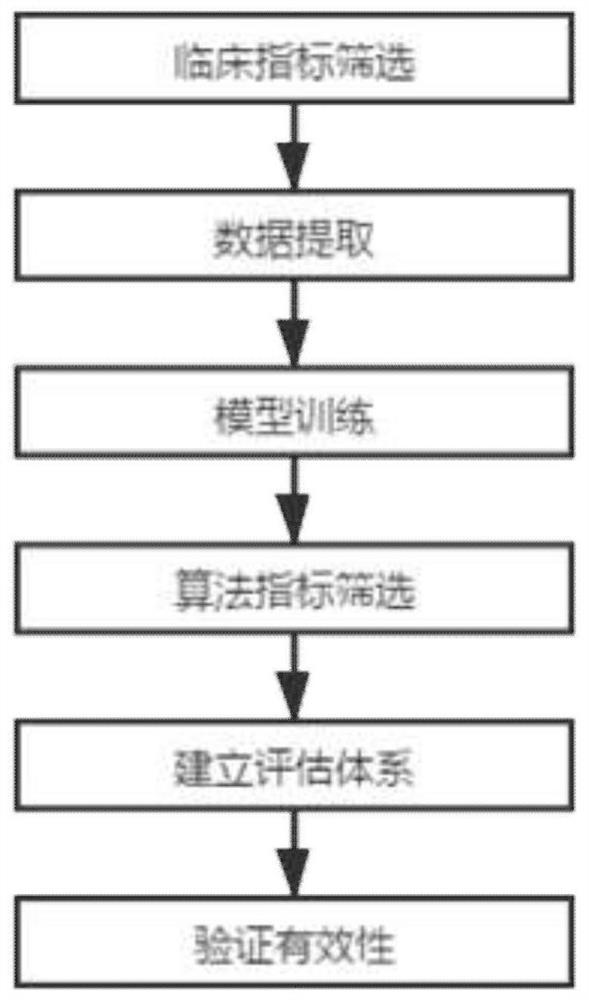Severe sequential organ failure scoring method and system based on machine learning
A machine learning and sequential technology, applied in the field of medical scoring, can solve the problems of lack of infection indicators and demographic indicators, inability to assess personal characteristics of the infection system, and inability to meet clinical applications, and achieve the effect of effective evaluation.
- Summary
- Abstract
- Description
- Claims
- Application Information
AI Technical Summary
Problems solved by technology
Method used
Image
Examples
Embodiment Construction
[0050] The present invention will be further described in detail below with reference to the accompanying drawings and embodiments. It should be noted that the following embodiments are intended to facilitate the understanding of the present invention, but do not limit it in any way.
[0051] Such as figure 1 As shown, a machine learning-based scoring method for severe sequential organ failure includes clinical index screening, data extraction, model training, algorithm index screening, establishment of an evaluation score system, and validation of the method. Its concrete implementation operation includes the following steps:
[0052] Step 1, clinical index screening: conduct preliminary index screening based on years of experience of critical care clinicians. Finally, the indicators of the respiratory system were selected, including PaO2 / FiO2, that is, the oxygenation index, the ratio of the partial pressure of oxygen in arterial blood to the concentration of inhaled oxygen...
PUM
 Login to View More
Login to View More Abstract
Description
Claims
Application Information
 Login to View More
Login to View More - R&D
- Intellectual Property
- Life Sciences
- Materials
- Tech Scout
- Unparalleled Data Quality
- Higher Quality Content
- 60% Fewer Hallucinations
Browse by: Latest US Patents, China's latest patents, Technical Efficacy Thesaurus, Application Domain, Technology Topic, Popular Technical Reports.
© 2025 PatSnap. All rights reserved.Legal|Privacy policy|Modern Slavery Act Transparency Statement|Sitemap|About US| Contact US: help@patsnap.com

